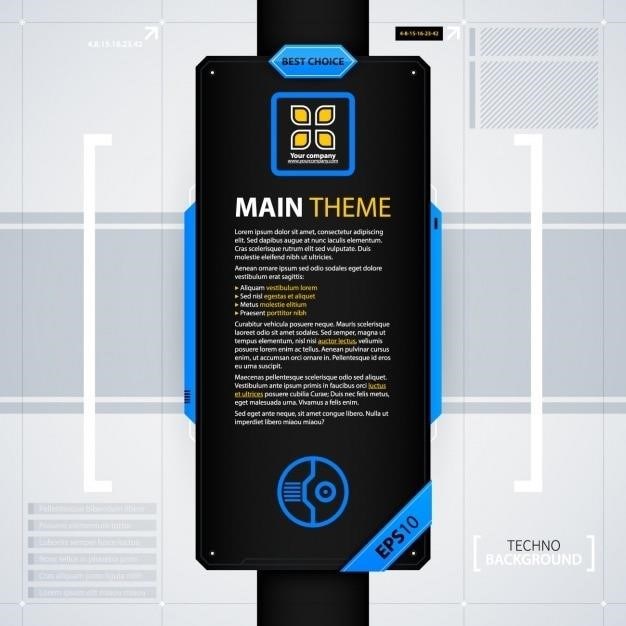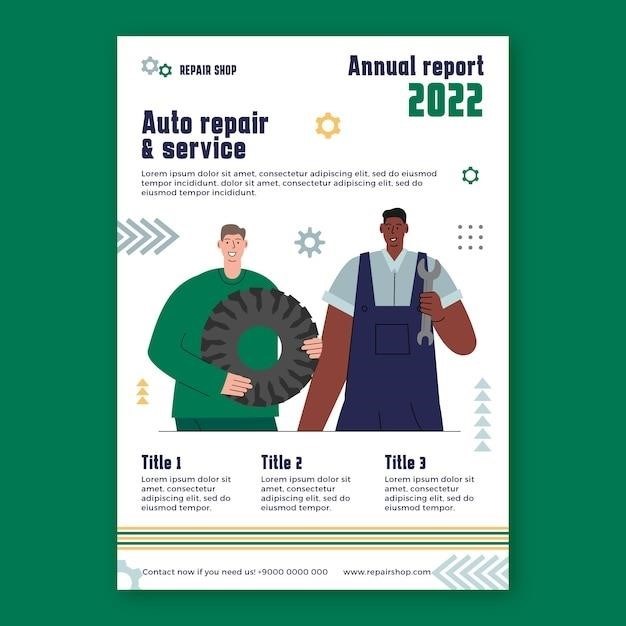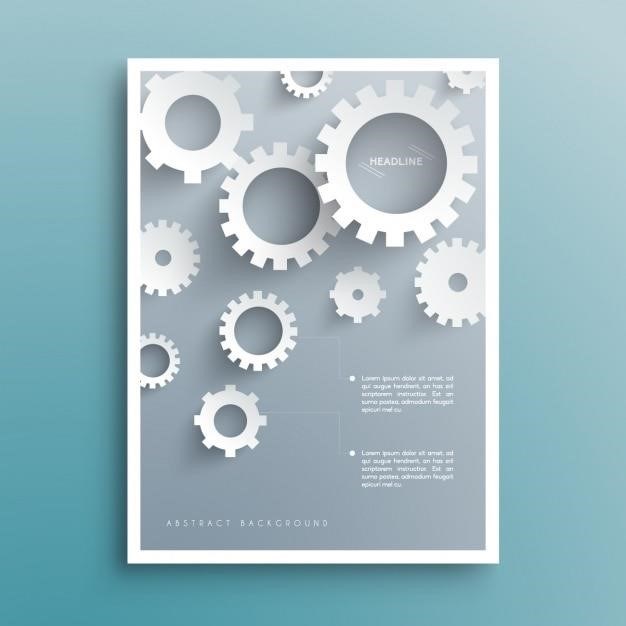
Pathfinder Warpriest Guide⁚ A Comprehensive Overview
This guide delves into the intricacies of the Pathfinder Warpriest‚ a potent hybrid class blending martial prowess with divine magic. We explore its unique strengths‚ diverse archetypes‚ and optimal build strategies for both seasoned players and newcomers. Discover effective combat tactics‚ essential equipment choices‚ and roleplaying advice to master this powerful class.
The Pathfinder Warpriest stands as a unique blend of martial combatant and divine spellcaster‚ a fascinating hybrid class that distinguishes itself from the Paladin. Unlike Paladins who often prioritize heavy armor and unwavering defense‚ Warpriests embrace a more flexible approach. While they possess formidable melee capabilities and can don sturdy armor‚ their reliance on spells and divine power sets them apart. Their effectiveness hinges on a skillful balance between battlefield prowess and strategic spellcasting‚ demanding a nuanced understanding of both combat and divine magic. The Warpriest’s core mechanic‚ Fervor‚ further emphasizes this dynamic interplay‚ empowering their martial abilities through faith-fueled enhancements. This makes the Warpriest a truly versatile class‚ capable of adapting to diverse combat situations and fulfilling various roles within a party. Their unique strengths and weaknesses demand a thoughtful approach to character building‚ emphasizing strategic decision-making in both combat and character progression.
Why Play a Warpriest? Strengths and Advantages
The Warpriest offers a compelling blend of strengths that make it a rewarding class to play. Its straightforward yet effective gameplay loop appeals to both new and experienced players. Unlike many classes heavily reliant on critical hits or consistent attack rolls‚ the Warpriest maintains its effectiveness even when missing several attacks. This resilience stems from its potent self-buffing capabilities and access to a broad range of cleric spells‚ offering exceptional support options. The diverse cleric spell list provides a wealth of utility and tactical flexibility. Whether focused on healing‚ battlefield control‚ or offensive support‚ the Warpriest has the tools to shine. The class’s adaptability allows for diverse builds catering to various playstyles and party compositions. Whether you prefer a front-line melee combatant or a more supportive role‚ the Warpriest can be molded to fit your preferred playstyle‚ making it a highly versatile and engaging class.
Warpriest Archetypes⁚ Champion of the Faith and Others
The Pathfinder Warpriest boasts a variety of archetypes‚ each offering a unique twist on the core class. The Champion of the Faith archetype‚ for instance‚ pushes the Warpriest closer to the Paladin archetype‚ enhancing its divine smite capabilities. However‚ this comes with a trade-off⁚ an increased reliance on Charisma‚ making it a more demanding build. Other archetypes offer different specializations and playstyles‚ allowing players to tailor their Warpriest to suit their preferred approach to combat and support. Some might focus on enhancing specific spellcasting abilities‚ while others might emphasize melee combat prowess or a unique blend of both. The selection of archetype significantly influences the Warpriest’s overall effectiveness and strategic potential‚ shaping their strengths and weaknesses. Careful consideration of the archetype’s features is essential when crafting a successful Warpriest character. Exploring the diverse options available allows players to create a truly unique and powerful character tailored to their playstyle and the needs of their party.
Understanding Warpriest Abilities⁚ Fervor and Divine Power
The Warpriest’s power stems from a potent combination of martial combat and divine magic‚ channeled through the unique mechanics of Fervor and Divine Power. Fervor acts as a self-buffing system‚ enhancing the Warpriest’s abilities based on their faith and devotion. By expending Fervor points‚ the Warpriest can significantly bolster their offensive and defensive capabilities‚ making them a formidable force on the battlefield. The management of Fervor is crucial; players must balance its use to maximize their effectiveness while avoiding depletion at critical moments. Divine Power‚ on the other hand‚ represents the Warpriest’s direct connection to the divine. This ability allows them to channel divine energy into their attacks and spells‚ further augmenting their power and inflicting devastating blows upon their foes. Mastering the interplay between Fervor and Divine Power is key to unlocking the Warpriest’s full potential and achieving optimal performance in combat. Effective use of these abilities requires strategic planning and adaptation to varying combat scenarios.
Building a Warpriest⁚ Optimizing Stats and Feats
Constructing a successful Warpriest hinges on a careful allocation of ability scores and strategic selection of feats. Strength is paramount for melee combat‚ directly impacting damage output and carrying capacity. Constitution ensures survivability‚ bolstering hit points and fortitude saves against debilitating effects. Wisdom governs spellcasting ability and divine powers‚ influencing the effectiveness of crucial spells and abilities. Charisma‚ while less critical than other stats‚ still plays a role in influencing social interactions and certain divine abilities. Feats should be selected to complement your chosen combat style and enhance your strengths. Power Attack is a popular choice‚ significantly increasing damage but at the cost of accuracy. Weapon Focus and Weapon Specialization refine proficiency with chosen weapons. Consider feats that improve spellcasting‚ such as Spell Focus or Spell Penetration‚ to optimize your divine magic capabilities. Remember to balance offensive and defensive capabilities‚ ensuring your Warpriest can withstand punishment while delivering powerful attacks. The synergy between your chosen stats and feats will significantly impact your character’s effectiveness.
Essential Spells and Divine Domains for Warpriests
Selecting the right spells and divine domain is crucial for optimizing your Warpriest’s effectiveness. Domains offer potent abilities and spells aligned with your deity’s portfolio‚ significantly impacting your character’s capabilities. Domains like Strength‚ War‚ or Protection provide combat-focused benefits‚ enhancing your offensive or defensive capabilities. Domains emphasizing healing‚ such as Healing or Life‚ offer support capabilities‚ making you valuable in and out of combat. Essential spells for a Warpriest include those bolstering combat prowess‚ such as Bless‚ Divine Power‚ and Shield of Faith. Spells providing battlefield control‚ such as Entangle or Hold Person‚ can disrupt enemy formations and create advantageous situations. Remember to consider spells that heal or protect allies‚ as a Warpriest’s role often extends beyond personal combat effectiveness. The synergy between your chosen domain and spells will determine your character’s overall effectiveness‚ ensuring a balanced approach towards both offensive and supportive roles. Careful spell selection and domain choice are paramount to building a well-rounded Warpriest.
Combat Strategies and Tactics for Effective Gameplay
Mastering combat as a Warpriest hinges on leveraging both martial prowess and divine magic. Begin by strategically positioning yourself to maximize your reach and defensive capabilities while utilizing terrain to your advantage. Before engaging‚ cast supportive spells such as Bless or Divine Power to enhance your allies’ and your own offensive capabilities. Prioritize targets based on threat level; focus fire on dangerous enemies first to neutralize immediate threats. Effectively utilize your Fervor ability to amplify your attacks and spells‚ ensuring you unleash devastating blows during critical moments. Remember‚ your spells are not just for offense; use protective spells strategically to mitigate incoming damage and enhance your survivability. Coordinate with your party members‚ focusing on teamwork and synergy. Maintain awareness of your surroundings and adapt your tactics based on the battlefield situation. A Warpriest’s success isn’t merely about raw power but about strategic thinking and effective resource management. By mastering these tactics‚ you will unlock the Warpriest’s true potential in combat.
Gear and Equipment Choices for Warpriests
Equipping a Warpriest effectively requires a balance of offensive power‚ defensive resilience‚ and utility. Weapon selection depends heavily on your build and preferred combat style. A sturdy melee weapon‚ such as a warhammer or longsword‚ is crucial for close-quarters combat‚ but ranged options like a sling or bow can offer tactical flexibility. Armor choices should prioritize protection without hindering mobility; medium armor provides a good balance. Consider shields for added defense‚ especially if you favor a less aggressive playstyle. Essential items include a holy symbol to enhance your divine abilities‚ potions for healing and spell boosting‚ and scrolls containing spells that complement your combat strategy. Don’t overlook utility items like climbing gear‚ lockpicks‚ and various tools‚ as they can prove beneficial in various situations. Remember‚ your equipment choices are not static; adapt and adjust your gear as you progress through the game‚ taking into account your character’s development and the challenges you face. Strategic gear selection is key to a Warpriest’s success.
Roleplaying a Warpriest⁚ Faith‚ Alignment‚ and Personality
A Warpriest’s identity is deeply intertwined with their faith‚ influencing their alignment‚ personality‚ and actions. Their devotion to a deity shapes their moral compass and provides a framework for decision-making. A lawful good Warpriest might embody unwavering righteousness‚ championing justice and upholding their deity’s tenets with unwavering conviction. In contrast‚ a chaotic good Warpriest could be more impulsive‚ driven by a passionate desire to protect the innocent‚ even if it means bending the rules. Consider how their faith manifests in their interactions – do they preach their beliefs openly‚ or are they more subtle in their demonstrations of piety? Explore their relationship with their deity – is it one of blind obedience‚ or a more complex‚ evolving partnership? A Warpriest’s personality is not solely defined by their faith; allow for individual quirks and flaws to emerge. A fierce warrior might harbor a hidden gentleness‚ while a seemingly stern individual could possess a surprising sense of humor. Remember‚ a well-developed backstory will greatly enrich your Warpriest’s character arc‚ adding layers of depth and complexity to their journey.
Advanced Warpriest Builds⁚ Maximizing Potential
To truly maximize a Warpriest’s potential‚ delve into advanced build strategies that go beyond the basics. Consider multiclassing options to enhance specific aspects of their capabilities. A dip into paladin for extra divine spells and smite abilities or fighter for increased martial prowess can significantly augment their effectiveness. Strategic feat selection is crucial; focus on feats that synergize with your chosen archetype and playstyle. Power Attack and Cleave can amplify your melee damage‚ while Combat Reflexes enhances your defensive capabilities. Don’t overlook the importance of divine domains. Domains like War‚ Strength‚ and Protection offer potent abilities that directly impact combat effectiveness‚ while others provide utility or support options. Experiment with different domain combinations to discover builds optimized for specific roles‚ such as a support Warpriest focused on healing and buffs or a damage-dealing powerhouse specializing in devastating attacks. Mastering the interplay between your spells‚ abilities‚ and equipment is key to unlocking your Warpriest’s full potential. Remember that meticulous planning and careful consideration of your character’s strengths and weaknesses are essential for creating a truly formidable Warpriest.

Dealing with Warpriest Weaknesses and Limitations
While Warpriests are powerful hybrid characters‚ they possess inherent weaknesses that must be addressed strategically. Their reliance on both melee combat and spellcasting can lead to a spread of resources‚ potentially hindering proficiency in either area. Careful stat allocation is crucial to mitigate this; prioritizing Strength and Charisma is paramount‚ but neglecting Constitution and Dexterity can leave a Warpriest vulnerable. The limited number of spells known compared to a dedicated cleric necessitates careful spell selection to maximize versatility. Choosing spells that offer both offensive and defensive capabilities is vital. Another significant limitation is their relatively low number of defensive abilities compared to other martial classes. This necessitates reliance on armor‚ shields‚ and strategic positioning to survive in challenging encounters. Feats and spells that enhance survivability‚ such as Toughness and Shield Other‚ are invaluable investments. Furthermore‚ the dependence on divine power and fervor can create vulnerabilities if disrupted or countered. Understanding these limitations and planning accordingly are key to overcoming them and creating a successful and resilient Warpriest character.
Popular Warpriest Builds and Examples
The versatility of the Warpriest allows for numerous effective builds‚ catering to diverse playstyles and campaign needs. A popular choice is the “Divine Warrior‚” focusing on maximizing melee damage through Strength‚ utilizing divine spells for buffs and support. This build excels in direct combat‚ leveraging the Warpriest’s ability to blend holy power with martial prowess. Alternatively‚ the “Sacred Striker” prioritizes a balance between spellcasting and combat‚ investing in Charisma and Dexterity. This build utilizes a mix of divine spells and weapon attacks‚ proving adaptable to various situations. For players preferring a more support-oriented role‚ the “Holy Protector” build emphasizes Charisma and Constitution‚ relying on spells to bolster allies and heal wounds. This build makes the Warpriest a valuable asset to any party. Specific examples include a Halfling Champion of the Faith focusing on crowd control and battlefield manipulation‚ or a Human Warpriest specializing in area-of-effect spells and devastating melee attacks. The possibilities are extensive‚ depending on the chosen deity‚ favored weapons‚ and desired role within the party. Experimentation is key to discovering the build that best suits your preferences and campaign demands.
Conclusion⁚ Mastering the Art of the Warpriest
The Pathfinder Warpriest‚ a unique blend of martial combat and divine magic‚ offers a rewarding and versatile experience for players seeking a challenging yet fulfilling character. Mastering this class requires careful consideration of character build‚ understanding the interplay between divine domains and combat abilities‚ and adapting to the ever-changing battlefield. Through thoughtful selection of spells‚ feats‚ and equipment‚ players can tailor their Warpriest to excel in diverse roles‚ from a devastating melee powerhouse to a supportive spellcaster. The key lies in leveraging the Warpriest’s unique strengths while mitigating their weaknesses‚ adapting strategies to overcome challenges‚ and understanding the synergistic potential of their abilities. Whether you prefer a direct‚ aggressive approach or a more strategic‚ supportive style‚ the Warpriest’s adaptability allows for a highly personalized and engaging gameplay experience. Embrace the blend of faith and fury‚ and embark on a journey of divine martial mastery.
























